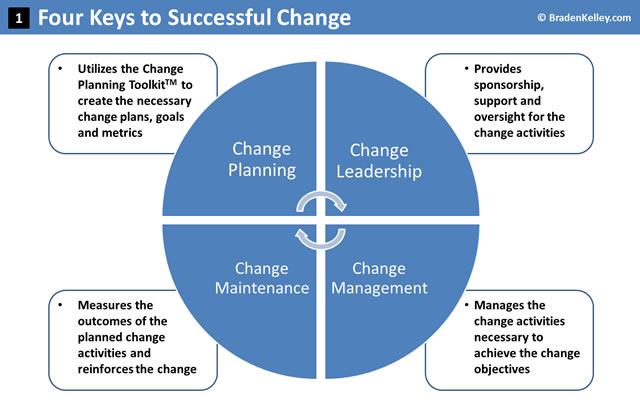Change is Hard
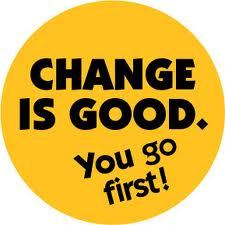 Change can be complicated, change can be confusing, and change can be difficult to successfully implement in any organization. This is why 70% of change initiatives have been found to fail.
Change can be complicated, change can be confusing, and change can be difficult to successfully implement in any organization. This is why 70% of change initiatives have been found to fail.
To help make change less overwhelming, and instead more visual and more collaborative, I set out to create the Change Planning Toolkit™ for project managers, change managers, and leaders everywhere to pick up and use with their change leadership teams to better plan and execute their organizational change initiatives, and even projects.
Change Planning Team Contributions
Creating a change planning team that can bring the information and influence to the table that you really need is one of the keys to the eventual success of your change planning sessions and the overall change effort as a whole. The information you need will obviously be driven by the topics that your team should cover as part of your change planning efforts. These include:
- What is the current state?
- What are the change drivers? (It is helpful to discuss history, context, and the main proponents.)
- Is there a budget for both planning and executing this change?
- What other change programs are in progress or about to begin?
- How ready are we as an organization to make this change?
- To see the rest of this list, please get yourself a copy of my book Charting Change
Who needs to be involved in change?
Nothing is more important for creating successful change in an organization than getting the right people in the room and engaged during the change planning process. And if you want to get your change effort off to a strong start and set it up for success, then I encourage you to focus more on knowledge than authority. Think about who knows the most about the key components of a holistic change plan.
Take a moment to consider which individuals in your organization will have the most knowledge and information on the intended change, and which individuals will provide the most considered viewpoints on the topics that you will focus on as you work through the series of worksheets and other tools in the Change Planning Toolkit™ on your way to creating your roadmap and series of fully populated change execution plans.
As we consider all of the data, personalities, ecosystem interactions and work items that must be considered, you’ll quickly see that change is a team sport and that there are many different roles for people to play.
With this in mind, I’ve created The Eleven Change Roles™ to identify the eleven roles that are important to the forming of a balanced and successful change leadership team, so start considering your candidates for:
1. Authority Figures/Sponsors
Somebody has to be in charge. This includes one main sponsor and a coalition of authority figures that can help push things forward when a push is required.
2. Designers
Designers are your big picture thinkers, people that can see how the pieces fit together, are skilled meeting facilitators, can quickly achieve mastery of new methodologies (like my Change Planning Toolkit™), and can help keep people on track as you build out the plans for your change effort.
3. Influencers
Influencers are well-respected and forceful people in the organization. They may lack the formal position power of a sponsor or authority figure, but they can help rally people to the cause with their words and actions.
4. Integrators
Integrators are good at bridging silos, building relationships that cut across geographies and hierarchies, and finding ways for different work teams and departments to work together to achieve a common goal.
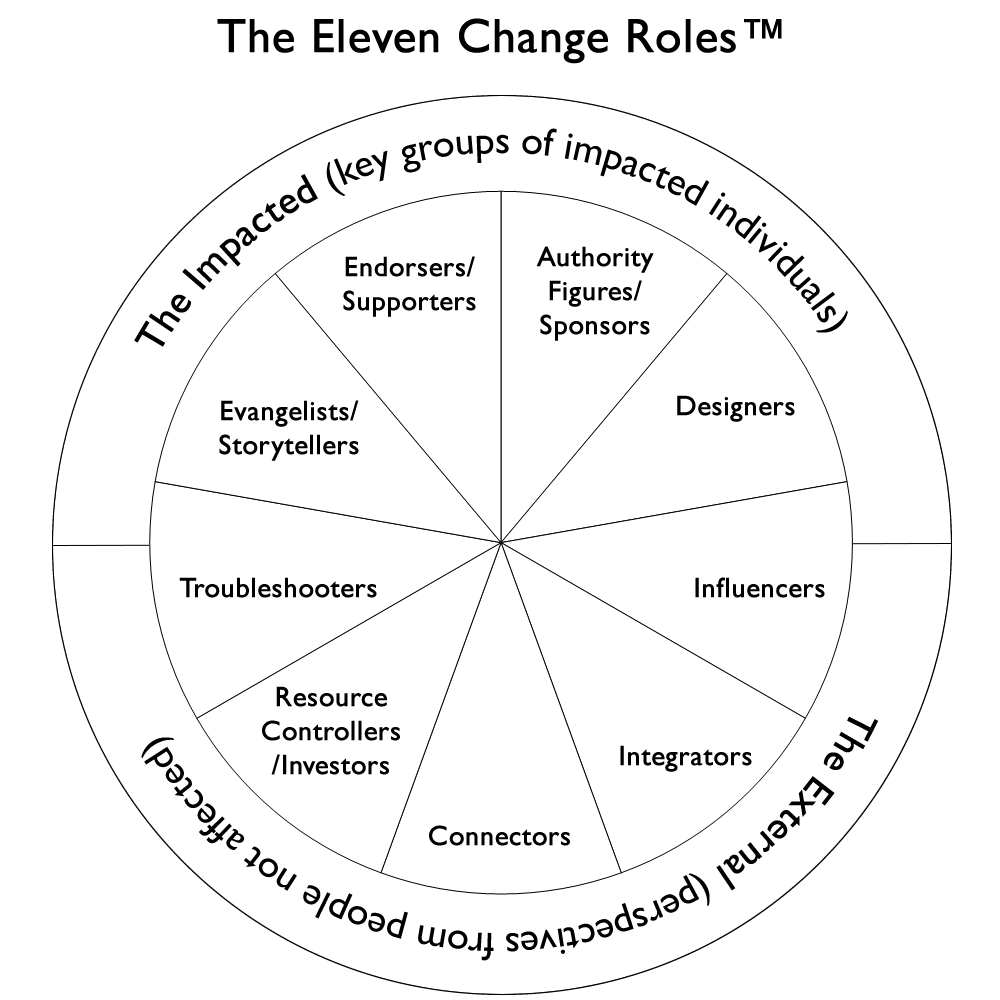
5. Connectors
Connectors are slightly different than Integrators, and the difference is that they know where the overt and hidden resources lie in the organization, and have the personal connections and influence necessary to open a dialogue that hopefully results in both needed connections AND access to resources.
6. Resource Controllers/Investors
These people have things that you need – human resources, information resources, physical resources, and human resources. You must convince them to invest those resources in helping you successfully achieve your desired change.
7. Troubleshooters
There are always going to be hiccups and problems that emerge along the way, some expected, and some not. Troubleshooters are really good at helping to identify those up front and enjoy the challenge of finding ways around, over, or under these potential barriers when they crop up. It is even better when the team can identify ways to avoid or overcome them before broader communications begin. Troubleshooters can help with this and often have the deep domain knowledge or the deep insight into the change target’s mindset necessary to also help move minds and resources to support the change program.
8. Evangelists/Storytellers
Every change effort has a story to tell about how the desired future state is better than the current state, and is worth the disruption of making the change. There is the building of a vision, the creation of themes that will weave together into your story, and symbols that will reinforce and show your commitment to realizing the goals you set out for the change effort. Without these, evangelism and storytelling will find it hard to help people understand or support the change goals. So, you need to have evangelists and storytellers at the ready.
9. Endorsers/Supporters
Getting people to agree to talk up the change effort, even if they are not taking an active role in pushing it forward towards completion, is incredibly powerful. Don’t be afraid to reach out and ask for this seemingly insignificant assistance, but be sure and arm these individuals with the themes, symbols and stories that will reinforce the change vision and sustain the change effort’s momentum.
10. The Impacted (key groups of impacted individuals)
Who’s going to be affected by this change? Don’t be afraid to invite these people into your planning efforts early on to voice their concerns so that you can understand their otherwise unvoiced objections, identify solutions or mitigations, and potentially recruit them as impactful Evangelists or Endorsers/Supporters.
11. The External (perspectives from people not affected)
It’s easy to miss risks, assumptions, barriers, and points of potential resistance when you get too close to the effort. Inviting people from outside your organization into your planning process, or to provide feedback on your change effort, will prove enlightening through the additional perspectives they contribute.
Conclusion
When you take the time to thoughtfully recruit people into all of The Eleven Change Roles™ listed above you will have a richer set of inputs, a much livelier discussion, and a stronger set of outputs from your change planning process.
Getting the right people with the right knowledge in the room and engaged during the change planning process will get you off to a strong start and set your change effort up for success. Having people with a strong ability to verbalize meaningful, well intentioned and well informed contributions around the key components of the planning process will provide powerful content as you work through the series of worksheets and other tools contained in the Change Planning Toolkit™ and ultimately populate your Change Planning Canvas™ and your execution plans. The toolkit includes more than 50+ tools including an Eleven Change Roles Worksheet™ that you can use in your change planning meetings or off-site to make sure you have all eleven roles filled.
CLICK HERE to get an 11” x 17” version of The Eleven Change Roles™ shown above as a FREE DOWNLOAD

Image credit: beaconinitiative.net and Charting Change by Braden Kelley (publisher: Palgrave Macmillan)
 Sign up here to get Human-Centered Change & Innovation Weekly delivered to your inbox every week.
Sign up here to get Human-Centered Change & Innovation Weekly delivered to your inbox every week.
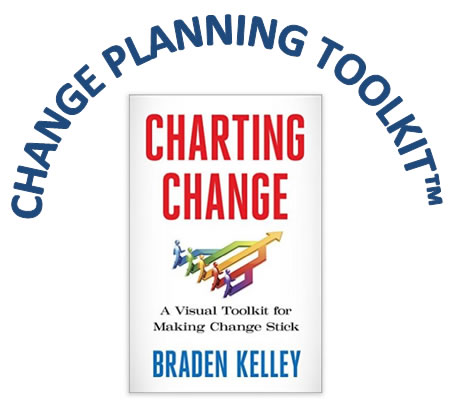 Have you downloaded your ten free change planning tools?
Have you downloaded your ten free change planning tools? I am making 10 free change planning tools from the toolkit available as 11″x17″ downloads along with JUST ADDED sample content from the QuickStart Guide,
I am making 10 free change planning tools from the toolkit available as 11″x17″ downloads along with JUST ADDED sample content from the QuickStart Guide, but book buyers will get access to the Change Planning Toolkit™ Basic License (26 of 50 tools) at 11″x17″ size — a $500 value,
but book buyers will get access to the Change Planning Toolkit™ Basic License (26 of 50 tools) at 11″x17″ size — a $500 value, and buyers of the Change Planning Toolkit™ Bronze License will get access to all 50+ tools for individual educational use at an 11″x17″ size — a $1,200 value.
and buyers of the Change Planning Toolkit™ Bronze License will get access to all 50+ tools for individual educational use at an 11″x17″ size — a $1,200 value.
![]() Sign up here to get Human-Centered Change & Innovation Weekly delivered to your inbox every week.
Sign up here to get Human-Centered Change & Innovation Weekly delivered to your inbox every week.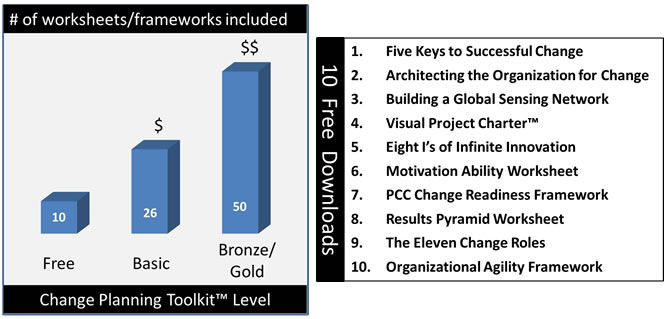
 Change can be complicated, change can be confusing, and change can be difficult to successfully implement in any organization. This is why 70% of change initiatives have been found to fail.
Change can be complicated, change can be confusing, and change can be difficult to successfully implement in any organization. This is why 70% of change initiatives have been found to fail. 
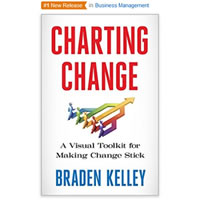
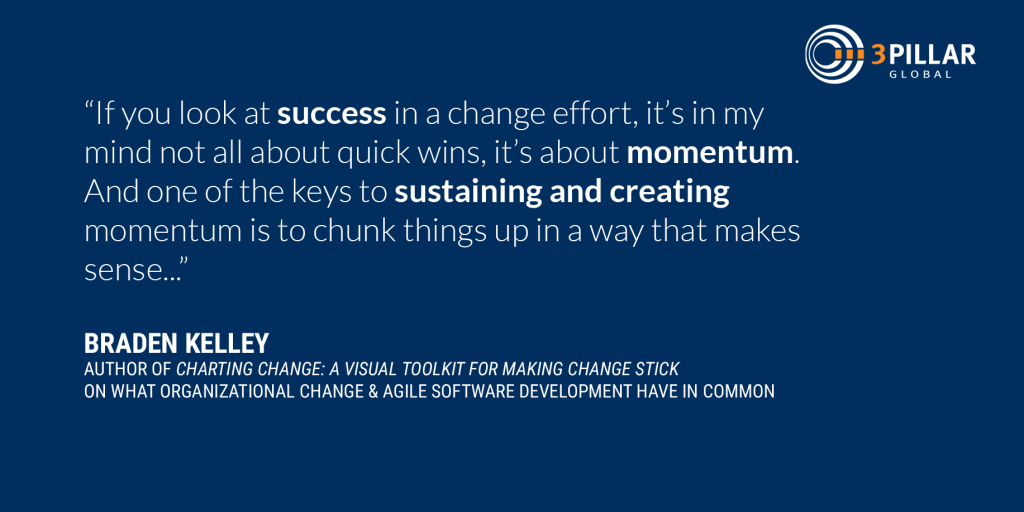
 If your organization is seeking to create a continuous change capability, it must have a strong focus on increasing its
If your organization is seeking to create a continuous change capability, it must have a strong focus on increasing its 

 The idea that people always resist change is a lie, and it is extremely damaging to organization’s seeking to increase their organizational agility.
The idea that people always resist change is a lie, and it is extremely damaging to organization’s seeking to increase their organizational agility.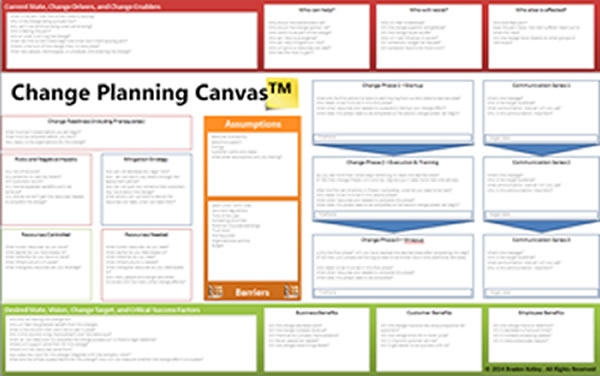


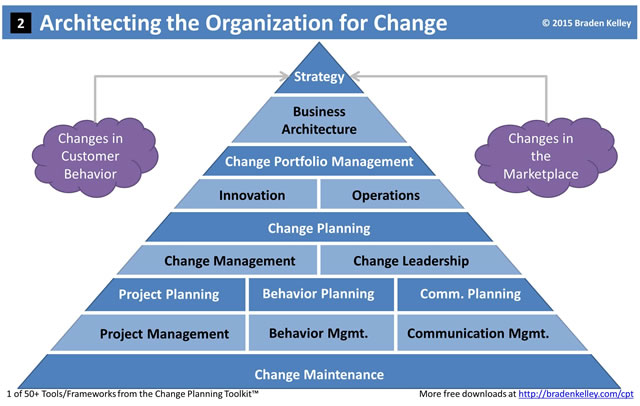
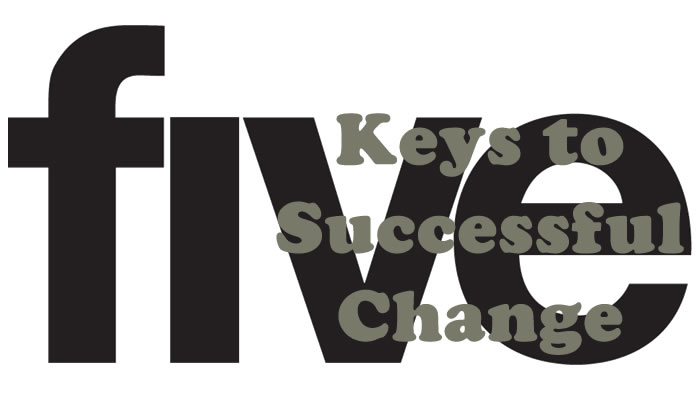

 Do you want to change the world?
Do you want to change the world?